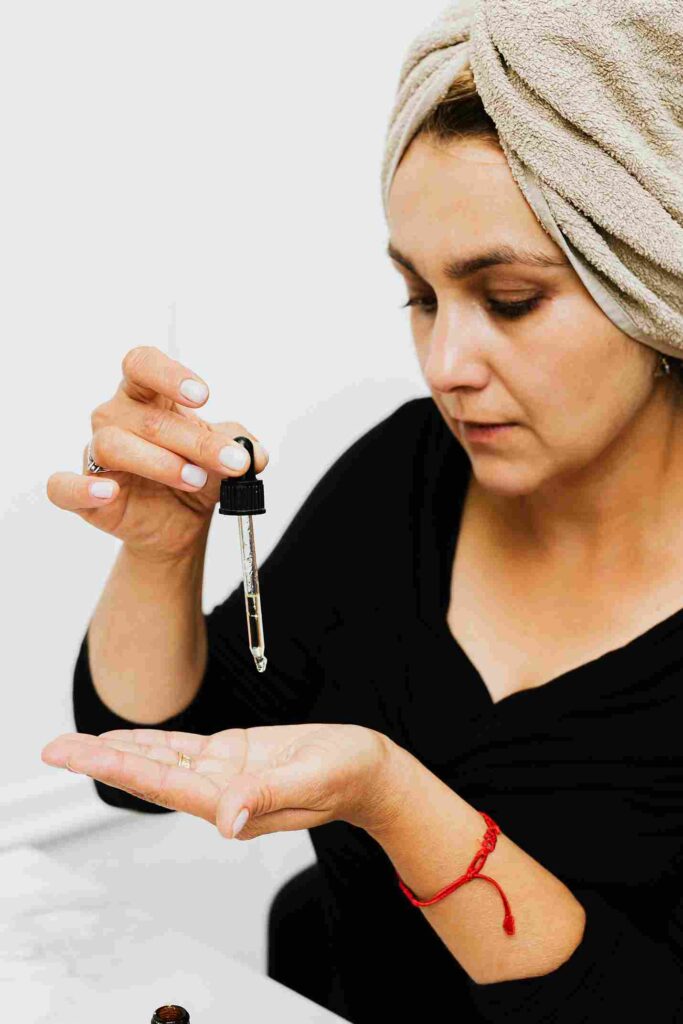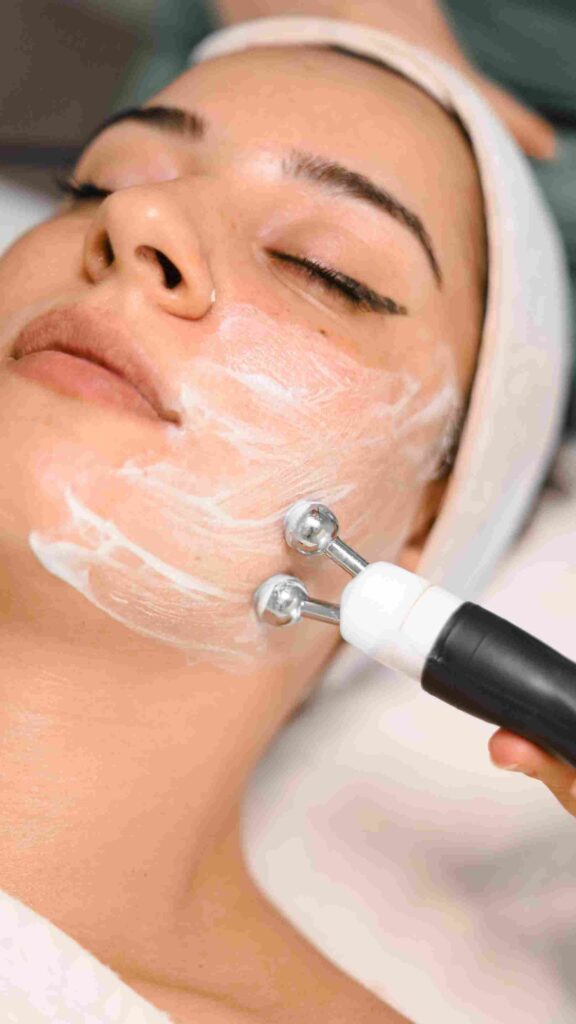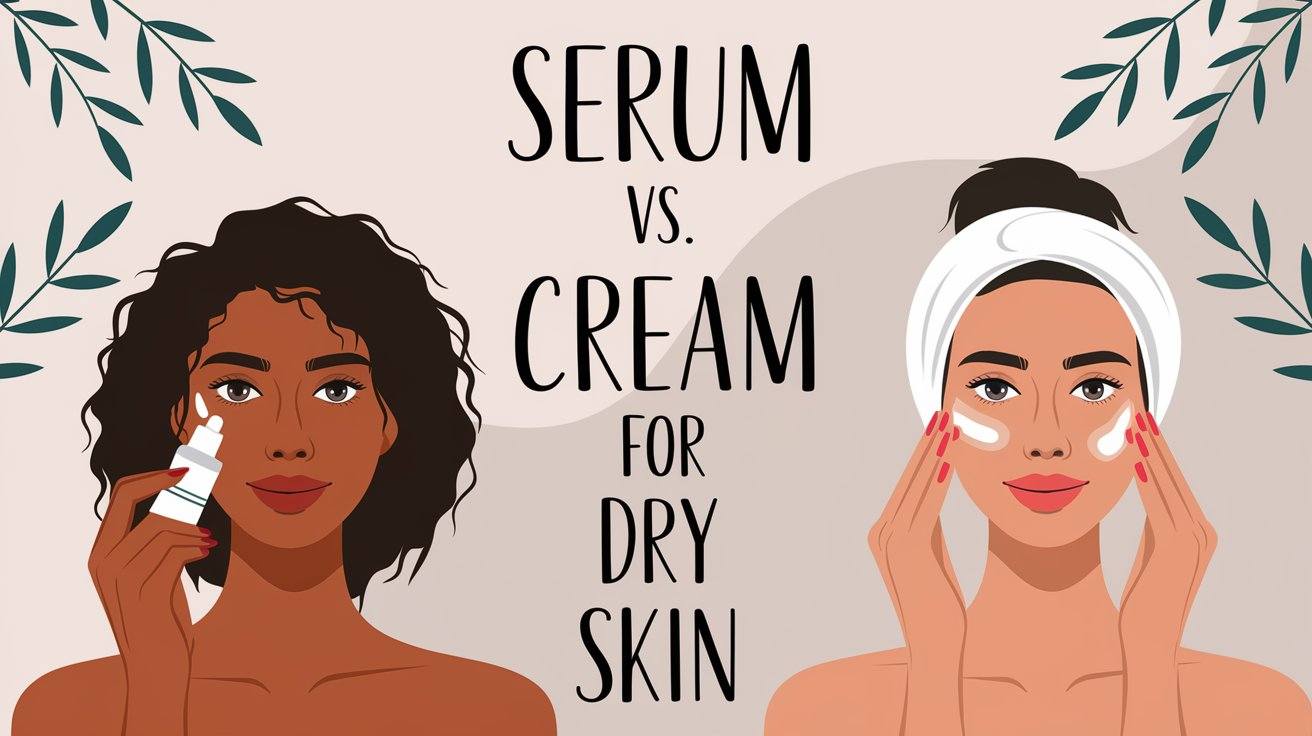Dry skin can be frustrating, leading to discomfort, irritation, and a lack of hydration. Many skincare products promise relief, but the debate over Serum vs. Cream for Dry Skin remains ongoing. Which one is truly better? Understanding the difference between serums and creams is crucial to choosing the best product for your skin.
Serums and creams serve different purposes and provide different benefits. Serums are lightweight and packed with concentrated ingredients, while creams offer deep hydration and a protective barrier. But which one should you choose for your dry skin? In this ultimate comparison, we’ll explore the benefits, differences, and ideal usage of serums and creams to help you make an informed decision.
Serum vs. Cream for Dry Skin
What is a Serum?

A serum is a lightweight skincare product with high concentrations of active ingredients. It is designed to penetrate deep into the skin and address specific skin concerns.
Benefits of Using Serum for Dry Skin
- Deep Hydration: Serums contain humectants like hyaluronic acid, which attract moisture to the skin.
- Fast Absorption: Due to their lightweight consistency, serums absorb quickly without leaving a greasy residue.
- Targeted Treatment: They contain potent ingredients such as vitamins, antioxidants, and peptides to improve skin health.
- Boosts Other Skincare Products: Using a serum before a moisturizer enhances its effectiveness.
Best Ingredients to Look for in a Serum
- Hyaluronic Acid: Retains moisture and plumps the skin.
- Vitamin C: Provides antioxidant protection and brightens the skin.
- Niacinamide: Helps improve skin texture and barrier function.
- Glycerin: A powerful humectant that draws moisture into the skin.
What is a Cream?

A cream is a thicker skincare product designed to provide intense hydration and create a protective layer on the skin.
Benefits of Using Cream for Dry Skin
- Long-Lasting Moisture: Creams contain occlusive agents that seal in moisture.
- Protects Skin Barrier: They help prevent water loss and shield the skin from environmental stressors.
- Nourishing Ingredients: Many creams contain emollients like shea butter, ceramides, and fatty acids.
- Soothing Effect: Ideal for sensitive or irritated dry skin.
Best Ingredients to Look for in a Cream
- Shea Butter: Provides deep nourishment and softens the skin.
- Ceramides: Help repair and strengthen the skin’s natural barrier.
- Squalane: A lightweight oil that hydrates without clogging pores.
- Petrolatum: Locks in moisture and prevents dehydration.
Serum vs. Cream for Dry Skin: Key Differences
| Feature | Serum | Cream |
|---|---|---|
| Texture | Lightweight, watery or gel-based | Thick, creamy |
| Absorption | Fast, penetrates deep | Slow, forms a protective barrier |
| Main Benefit | Delivers concentrated active ingredients | Provides long-lasting hydration |
| Best For | Targeting specific skin concerns | Strengthening the skin barrier |
| When to Use | Before moisturizer | After serum or as the last step |
Should I Use Both Serum and Cream?
Using both a serum and a cream can be highly beneficial, especially for dry skin. Here’s why:
- Layering provides maximum hydration – Serums deliver deep moisture, while creams lock it in.
- Targets multiple skin concerns – Serums focus on hydration and repair, while creams offer protection and nourishment.
- Balances hydration levels – A combination ensures your skin gets both immediate and long-lasting moisture.
- Boosts overall skin health – Helps strengthen the skin barrier and prevents dryness.
How to Use Serum and Cream Together for Dry Skin
To get the most benefits from both products, follow these steps:
- Cleanse Your Face: Start with a gentle cleanser to remove dirt and oil.
- Apply Serum: While the skin is still slightly damp, use 2-3 drops of serum and gently press it into the skin.
- Wait for Absorption: Let the serum absorb for a minute before applying moisturizer.
- Apply Cream: Use a pea-sized amount of cream to lock in moisture and protect the skin barrier.
- Use Sunscreen in the Morning: Always finish with SPF during the day to protect your skin.
When to Choose a Serum or Cream
Choose a Serum If:
- You need a lightweight product that absorbs quickly.
- You want to target specific skin concerns like dullness or fine lines.
- Your skin benefits from potent ingredients like antioxidants and peptides.
Choose a Cream If:
- Your skin feels tight, flaky, or extremely dry.
- You need a product that locks in moisture for hours.
- You prefer a richer texture that soothes irritation.
10 Best Facial Serums For Dry Skin
What to Avoid When Using Serum and Cream for Dry Skin
To get the best results from your skincare routine, avoid the following mistakes:
- Overusing products – Applying too much can clog pores and cause irritation.
- Skipping sunscreen – Some serums and creams may increase skin sensitivity to the sun.
- Mixing incompatible ingredients – Avoid using retinol and vitamin C together as they may cause irritation.
- Not applying on damp skin – Serums work best when applied to slightly damp skin for better absorption.
- Using harsh exfoliants – Over-exfoliating can strip the skin of natural oils, making dryness worse.
Also Read: 7 Expert Tips on How to Choose Face Serum for Dry Skin?
Conclusion
When it comes to Serum vs. Cream for Dry Skin, both have unique benefits. Serums deliver high concentrations of active ingredients for targeted treatment, while creams provide long-lasting hydration and protection.
The best approach is often to use both in a skincare routine—applying a serum first to address skin concerns and then layering a cream to lock in moisture.
Understanding your skin’s needs and choosing the right products will help keep your skin hydrated, healthy, and glowing.
FAQ Section
1. Can I use both serum and cream for dry skin?
Yes, using both together can maximize hydration and target specific skin concerns while keeping moisture locked in.
2. Should I apply serum or cream first?
Always apply serum first, followed by cream. Serums penetrate deeper into the skin, while creams create a protective barrier.
3. How often should I use serum and cream for dry skin?
You can use serum and cream twice a day—morning and night—for optimal hydration and skin protection.
4. Can serum replace cream for dry skin?
No, serums provide deep hydration but lack occlusive agents. Creams are necessary to seal in moisture and prevent dryness.
5. What ingredients should I avoid in serums and creams for dry skin?
Avoid alcohol-based products, artificial fragrances, and harsh exfoliants, as they can dry out or irritate the skin.





